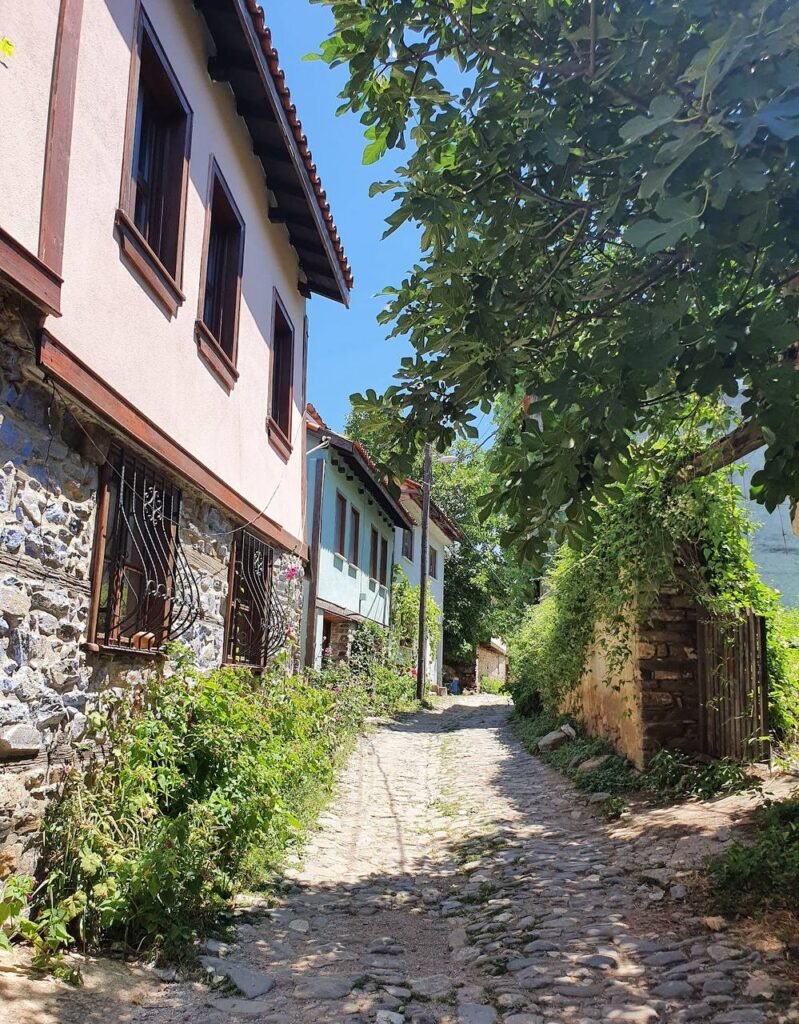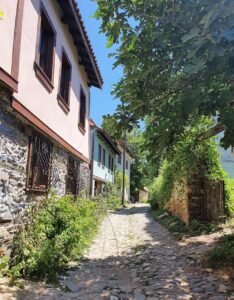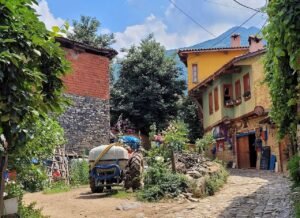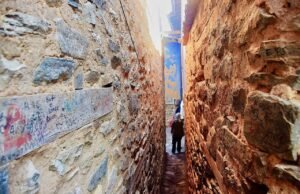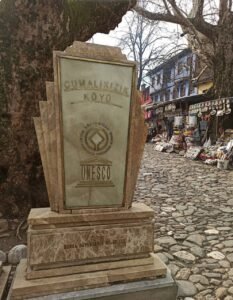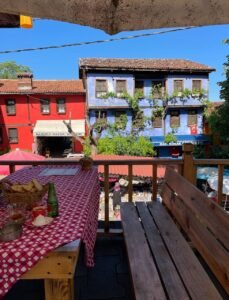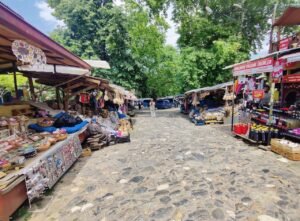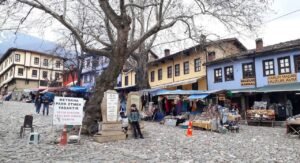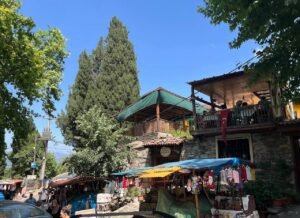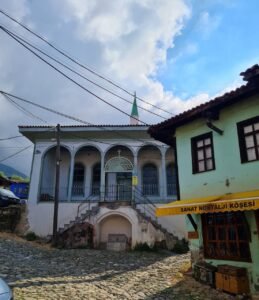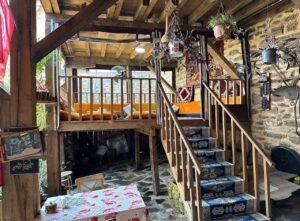Description
Cumalıkızık Village, Bursa – A Timeless Ottoman Jewel
Nestled at the foot of Uludağ, just 10 km east of Bursa’s city center, lies Cumalıkızık—a living Ottoman‑era village that has stood since the 14th century. Founded during the early days of the Ottoman Empire, it is part of the UNESCO-listed “Bursa and Cumalıkızık: the Birth of the Ottoman Empire” cultural landscape since 2014 .
🕰 A Walk Through Centuries
Cumalıkızık offers a rare, immersive journey into history. Wander down its narrow, cobblestone streets where medieval gutters still direct rainwater gently downhill—a smart feature of village planning . Along these lanes, over 270 historic houses stand—made of rubble‑stone ground floors topped with wood and adobe upper levels, many topped by quaint bay windows.Of these, around 180 remain inhabited, their walls whispered with centuries of everyday Ottoman life .Walls painted in vibrant blues, yellows, and purples contrast beautifully with earthy textures, transforming the village into a living open‑air museum.
Must-See Sights
Cumalıkızık Mosque & Zekiye Hatun Fountain
Located in the heart of the village, the mosque dates back to the 17th century. Constructed with chestnut wood, it features striking frescoes depicting iconic Ottoman landmarks like the Selimiye and Blue Mosques . Nearby, the marble Zekiye Hatun Fountain, dating to 1917, continues to supply fresh village water .
Historic Hamam
Built during the Ottoman era and renovated in 1983, the traditional bath reflects rural lifestyle and communal customs of the past .
Ethnography Museum & Küpeli Ev
Step inside the village museum—Cumalıkızık Köy Müzesi—to explore displays of traditional costumes, tools, and daily artifacts . Upgrade the experience at Küpeli Ev (“House of Earrings”), a captivating 17th-century home-turned-ethnographic museum showcasing 1,500 donated items—tickets are about 40 ₺ .
Stone Bridges & Ancient Trees
Explore lush, wooded surroundings and ancient plane trees, one over 2,400 years old, that watch over the village entrances . Quaint stone bridges and nearby waterways enrich the natural and photo-worthy charm .
Nature & Adventure
Cumalıkızık is more than history—it’s a nature door. Located on Uludağ’s northern flank, the village offers hiking trails like the scenic Fidye-Kızık–Erikliyayla and routes to Küreklidere and Saitabat waterfalls, ideal for summer escapes . Camping options are available near the falls, offering eco-friendly escapes under the forest canopy.
A Culinary Heritage
Cumalıkızık is often described as “world’s neatest little village—for breakfast, at least” . Traditional Turkish breakfasts are a ritual—a spread of fresh bread, cheeses, olives, eggs, honey, jams, gözleme and more, served in rustic courtyard cafés with endless tea .Hosts often seat visitors under geranium-laced bay windows, creating a moving Ottoman tableau .
Local produce is a highlight: fresh raspberries, cherries, homemade pickles, soaps, carved souvenirs and textiles can be found at vibrant street stalls. In June, the village celebrates its bountiful raspberry harvest with a festive, music-filled Raspberry Festival .
Living Heritage & Sustainability
Tourism has provided an economic lifeline—runs of guest houses, cafes, and craft shops keep the villagers involved in their lifeways . Many homes are now boutique pensions: Kınalı Kar Guesthouse, Bulanlar Konak, and Mavi Boncuk Konuk Evi invite guests to stay within historic walls while savoring homemade breakfasts .
The whole community shows deep commitment to preservation and sustainability: solar panels provide hot water, waste is recycled, and residents protect architectural authenticity under UNESCO guidance .
Getting There & Practical Tips
-
Location: Yıldırım district, Bursa Province; altitude provides refreshing air, mild summers, and cool winters .Access: 15–20-minute ride from Bursa via bus, metro + dolmuş, or drive. From Istanbul, buses or drive – 155 km away .
-
Parking: Available at village entrance.
-
Best Time: Spring to early summer for blossoms and festivals; autumn offers a quieter charm. Weekdays are less crowded; weekends draw up to 50,000 visitors .
-
Footwear: Wear sturdy shoes—streets are uneven cobbles .
-
Accessibility: Not ideal for wheelchairs.
-
Opening Hours: Museums closed Mondays; check before visiting .
Why Cumalıkızık Matters
Cumalıkızık is more than a tourist stop—it’s a narrative in stone and wood of Ottoman rural architecture, communal culture, and environmental harmony. It preserves spatial planning, decorative arts, natural materials, and sustainable practices—demonstrating the balance of past and present required to protect living heritage.
As UNESCO notes, the village's authentic fabric, from house structures to agricultural terrains, offers insight into early Ottoman rural society—a functioning cultural landscape that thrives through constant inhabitation and mindful tourism .
Final Thoughts
A visit to Cumalıkızık isn’t just sightseeing—it’s storytelling. From sunlit bay windows and steaming gozleme in courtyard breakfasts to echoing prayers from the mosque, the village brings you face‑to‑face with the soul of Ottoman Anatolia.
Whether you're savoring fresh raspberries at the June festival, hiking to hidden waterfalls, exploring ancient houses, or sipping tea beside locals, Cumalıkızık invites you to slow down and belong—to experience history not as a distant concept, but as a fellow traveler in a living, breathing village. For those seeking authenticity, culture, and natural serenity near Bursa, Cumalıkızık remains timeless—waiting with open wooden doors and warm smiles.
Location
-
Cumalıkızık, 16370 Yıldırım/Bursa
